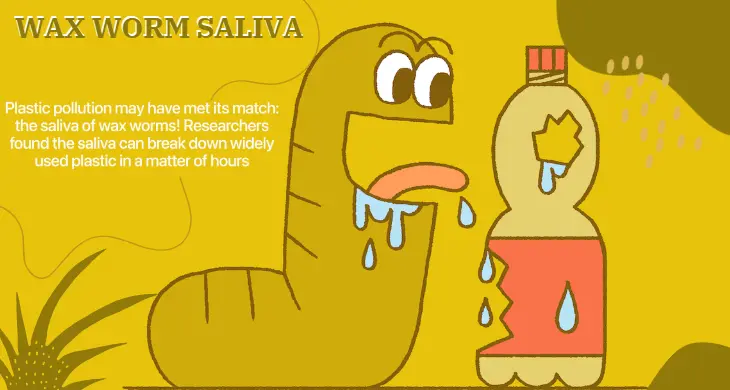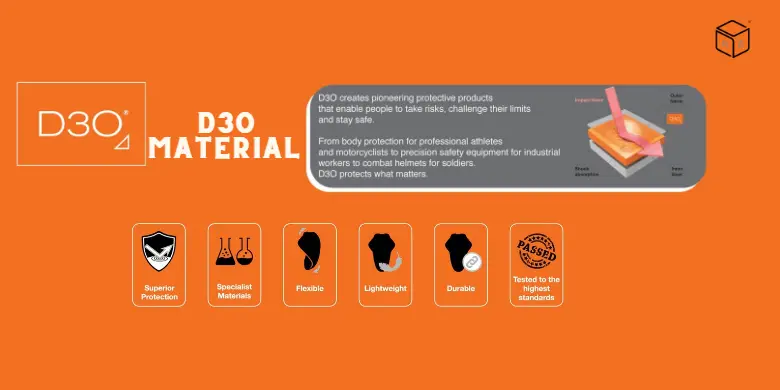Introduction:
Plastic pollution has become a global environmental crisis, but nature has a surprising ally in the fight against this menace – the humble wax worm. These tiny creatures possess a secret weapon in their saliva that has shown remarkable potential in breaking down plastic. In this article, we delve into the fascinating world of wax worms and explore their unique ability to combat plastic waste.
Understanding the Wax Worm’s Saliva:
Wax worms, the larvae of wax moths, are typically found in beehives where they feed on beeswax. Scientists studying these worms made an astonishing discovery – their saliva contains enzymes capable of degrading polyethylene, a common plastic used in packaging materials. This revelation has opened up new possibilities in the fight against plastic pollution.
The Power of Enzymes:
Enzymes found in wax worm saliva, specifically the enzyme known as “ethylene biodegrading polymerase,” have shown the ability to break down the strong carbon-carbon bonds present in polyethylene. These enzymes act as catalysts, accelerating the breakdown process and transforming the plastic into environmentally friendly compounds.
Potential Applications:
The discovery of wax worm saliva’s plastic-fighting potential has sparked excitement in various fields. Scientists are exploring ways to harness these enzymes for large-scale plastic degradation. Additionally, researchers are investigating the possibility of using wax worms in waste management systems to break down plastic waste more efficiently and sustainably.
Facts:
- Wax worm saliva contains enzymes that can break down plastic materials, making it a potent tool in combating plastic pollution.
- Scientists have discovered that wax worms can digest polyethylene, a common plastic used in packaging and single-use items.
- The enzymes in wax worm saliva have the ability to degrade plastic at a much faster rate compared to other natural or synthetic methods.
- Wax worm saliva is non-toxic and environmentally friendly, making it a sustainable solution for plastic waste management.
- The discovery of wax worm saliva’s plastic-degrading properties could revolutionize recycling and waste management industries.
- Wax worms are the larvae of the wax moth, which are typically used as fishing bait.
- These tiny caterpillars can consume plastic at an astonishing rate due to their powerful digestive enzymes.
- Wax worm saliva contains specific enzymes that target the chemical bonds in plastic polymers, breaking them down into smaller, more manageable compounds.
- The plastic-degrading enzymes found in wax worm saliva are known as esterases.
- Esterases are capable of breaking down the long chains of carbon and hydrogen molecules in plastic, reducing them to simpler forms.
- Wax worms have a high tolerance for toxic chemicals commonly found in plastic materials, allowing them to thrive in plastic waste environments.
- Researchers are studying the genetics of wax worms to understand how they produce enzymes capable of breaking down plastic.
- The discovery of wax worm saliva’s plastic-degrading properties was accidental when scientists were studying their ability to digest beeswax.
- Wax worm saliva can break down various types of plastic, including polyethylene terephthalate (PET) commonly used in beverage bottles.
- The plastic-degrading enzymes in wax worm saliva work by breaking the long polymer chains into shorter chains.
- Wax worms are not the only creatures that possess plastic-degrading enzymes. Mealworms and bacteria have also been found to exhibit similar abilities.
- The enzymes in wax worm saliva can degrade plastic both in the presence and absence of oxygen.
- Wax worms can consume and break down plastic without suffering any ill effects, making them a suitable candidate for plastic waste management.
- The process of breaking down plastic using wax worm saliva is known as biodegradation.
- Wax worm saliva has shown potential in reducing the lifespan of plastic waste from centuries to just a few weeks.
- The wax worm’s ability to consume plastic was first discovered by Federica Bertocchini, a Spanish scientist and beekeeper.
- The plastic-degrading enzymes in wax worm saliva can be produced in large quantities through genetic engineering.
- Wax worms can be bred and cultivated to create an abundant source of plastic-degrading enzymes.
- Researchers are exploring the possibility of using wax worm saliva to create biodegradable plastic alternatives.
- Wax worm saliva has been successfully used to degrade plastic films and fibers.
- The enzymes in wax worm saliva can break down plastic into substances that can be utilized by other organisms in the environment.
- Wax worms are incredibly resilient and can survive in a wide range of environments, making them adaptable to different waste management systems.
- Wax worm saliva not only breaks down plastic but also leaves behind harmless byproducts that do not contribute to environmental pollution.
- The discovery of wax worm saliva’s plastic-degrading abilities could significantly reduce the amount of plastic waste in landfills and oceans.
- Wax worms have the potential to be used in bioremediation projects, where they can help clean up plastic-contaminated areas.

Q1. How did scientists discover wax worm saliva’s plastic-degrading abilities?
A1. Scientists initially observed wax worms chewing through plastic bags and discovered that their saliva played a crucial role in breaking down the plastic.
Q2. Can wax worms be used to replace traditional plastic recycling methods?
A2. While wax worms show promise in plastic degradation, further research is needed before they can be implemented on a large scale.
Q3. Are there any other natural solutions to plastic pollution?
A3. Yes, researchers are studying various organisms, such as bacteria and fungi, that possess the ability to break down plastic.
Conclusion:
The wax worm’s saliva holds incredible potential as a natural weapon in the fight against plastic pollution. With their unique enzymes capable of breaking down polyethylene, these small creatures could play a vital role in creating a more sustainable future. Continued research and development in this field will undoubtedly contribute to finding effective solutions to combat plastic waste and preserve our planet for future generations.




